Tired of not knowing exactly how to attract birds to your yard and garden? Knowing how to adjust your yard’s features to serve birds’ basic needs will help you create an environment for them to socialize, mature, and nest freely.
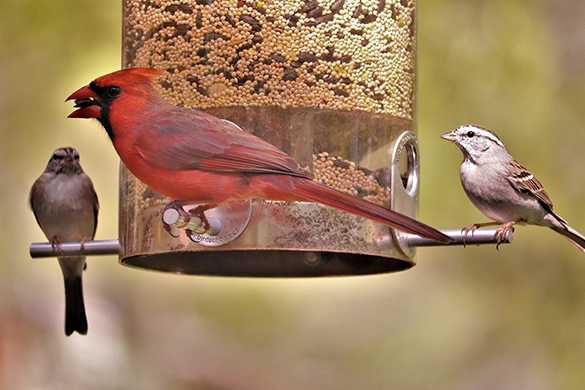
homeandgardeningguide.com gathered the following information to help you create a safe place for multiple bird species to visit and flourish.
Attracting Birds to Your Yard
The easiest way to attract different bird species to your yard is by offering a variety of food sources, providing fresh water, installing native grass and plants, planting fruit-bearing trees, and growing shrubs in varying heights and densities to promote an appealing, safe habitat for local and migrating birds to forage, roost, and nest in. Consider the following additions and adaptations to your yard’s features:
Plant Native Grasses, Plants, Shrubs, and Trees
Before planting your garden or developing your landscape, you should investigate local, native plants in your hardiness zone. Planning your yard with bird-friendly plants that flower at different times of the year will effortlessly attract various bird species through the flowering season. Planting early bloomers will provide a food source for early summer migrants, while planting late bloomers will attract birds leaving later. By doing this, you are providing sustenance for resident birds as well.
Note: The most effective way to encourage a variety of birds to your yard is to plant multiple native tree, shrub, and flower species as possible.
Provide a Year-Round Water Source
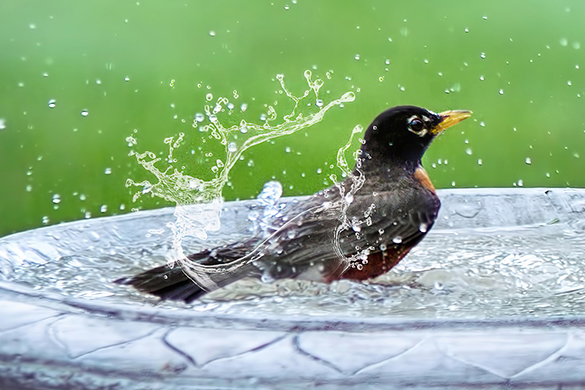
A freshwater source is necessary to maintain a bird population. This water source needs to be shallow (2 to 3 inches) and cleaned or replaced regularly. Running water, like a shallow fountain, is ideal. To minimize predation, the water feature should be elevated or in the middle of an open area. Birds require access to fresh water year-round, so keeping it available during the winter is crucial.
Tip: A pond, fountain, bird bath, or simple feature with water trickling over a large stone will draw birds in for a cool drink or refreshing bath.
Eliminate Commercial Insecticide Use in Your Yard
Using organic or natural insect deterrents helps wildlife thrive. Insects are the primary food source for many bird species and are an essential nourishment source for young birds.
Note: The more bird species you attract to your yard, the fewer insect pest problems you will have.
Provide Fresh Nectar for Hummingbirds
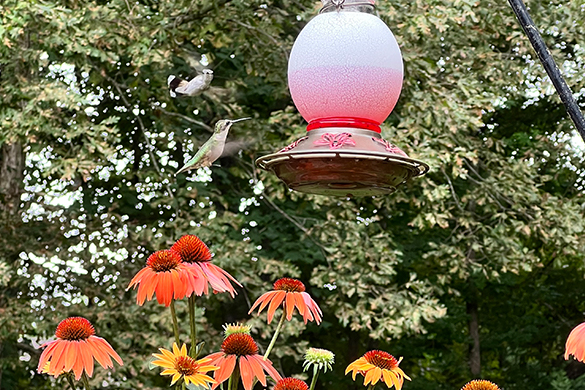
Install hummingbird feeders at eye level or higher in partially shaded areas. You can make a sugar solution (one part white sugar to four parts water). Boil the solution briefly to sterilize it and dissolve sugar crystals. Feeders should be washed and sanitized every few days with very hot water and kept clean to prevent mold or bacteria growth.
Supply Food in Feeders
Simple bird feeders are excellent sources of supplemental nourishment when food is not readily available. They also enhance your bird-watching opportunities.
Note: Birds eat a variety of food. Some consume seeds, while others eat insects, berries, and fruit. Seed-eating species may nest through the winter, eating from your feeder if you provide seeds they like. But birds that thrive on insects and fruit will migrate to locations where those foods are plentiful.
Strategically Locate Bird Feeders to Prevent Window Collisions
Protect birds from window collisions by not placing any feeders or attractions within five feet of windows. Window treatments, hanging plants, and decorations outside windows will help prevent bird strikes.
Tip: Attach fruit tree netting outside windows as a barrier to deflect birds from the glass.
Keep Dead Trees
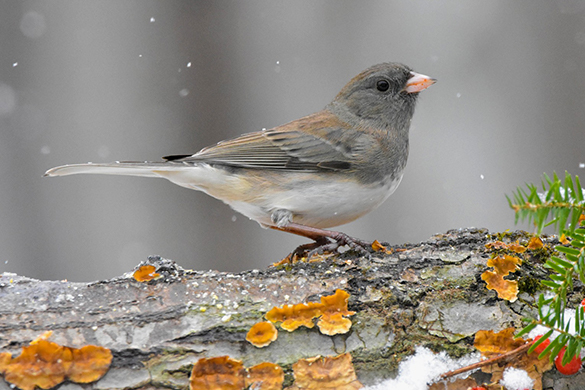
Dead trees (fallen trees or sturdy snags) provide cavity-dwelling spaces for birds to raise offspring and as a food source to collect insects. Many species will seek shelter from bad weather and predators inside these hollowed-out trees.
Note: Be careful so as to not preserve an infected tree that’s capable of transmiting disease to others in your yard.
Keep a Brush Pile in Your Yard
A brush pile in a secluded corner of your yard will significantly benefit birds dependent on ground-level features. Start your pile with sturdy logs, topping it with smaller branches, leaves, and clippings. Some birds hunt, roost, or nest in brush piles.
Keep Cats Indoors
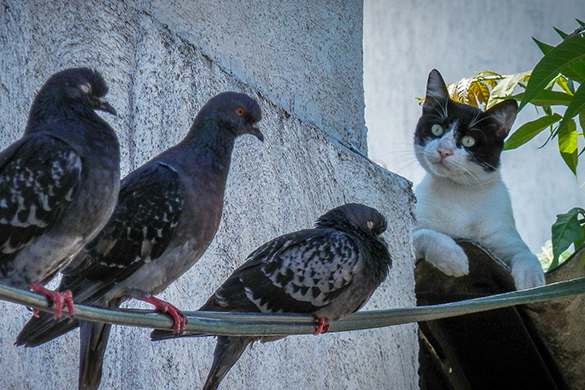
Cats kill birds, often pouncing on ground-feeding birds and those stunned by window collisions. Outdoor cats are particularly dangerous to birds in the spring when fledglings are on the ground.
Attracting Birds
In this article, you discovered valuable information and tips to help you attract and nourish multiple bird species to your yard and garden.
Attracting birds to your yard and garden provides purpose to its components and features while supporting local wildlife with a safe space, water, and nourishment.
Stop guessing why birds won’t visit, and learn the exact ways to attract birds into your yard.
Sources:
extension.uga.edu/publications/detail.html?number=C976
ucanr.edu/datastoreFiles/268-824.pdf
nwf.org/Garden-for-Wildlife/Wildlife/Attracting-Birds
audubon.org/news/11-tips-feeding-backyard-birds
Visit www.homeandgardeningguide.com/gardening-landscaping/ideas/ for more lawn care articles, resources, how-to tips, and DIY ideas.